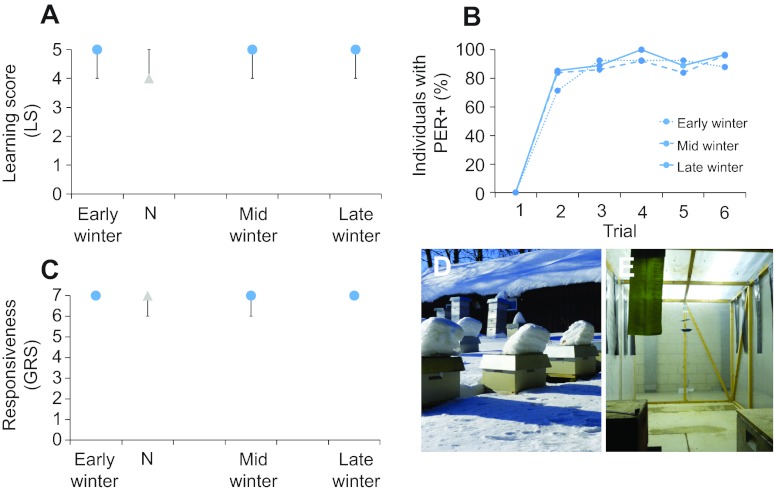Fig. 1.
No symptom of behavioral senescence, measured as learning performance, was detected throughout 6 months of winter. (A,B) Olfactory learning performance was tested in October (early winter), January (mid winter) and March (late winter). No difference in learning score was detectable between winter bees at these time points (P=0.47, KW). Also, the learning score of young controls (young nest bees, N) was similar to that of winter bees, as established for the initial time point (early winter, P=0.53, MWU). For each learning trial the percentage of individuals with a positive response to the conditioned stimulus (PER+) is shown. (C) Likewise, gustatory responsiveness, critical for learning performance, was similar among winter stages (P=0.23, KW), and when compared with the young nest bee control (N, P=0.99, MWU). (D) Experimental colonies in late winter. (E) An indoor flight room was used to induce summer traits in former wintering colonies (cf. Fig. 2). In A and C, medians as well as upper and lower quartiles are shown for learning score and gustatory responsiveness, respectively.

